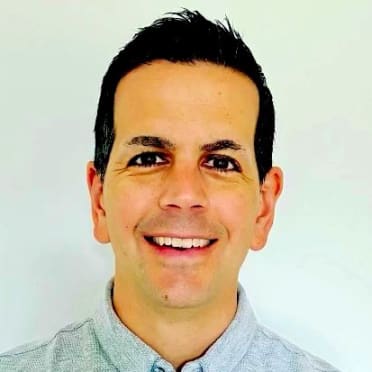COOPERSTOWN, N.Y. -- CC Sabathia might be a first-ballot Hall of Famer. But that doesn’t mean he didn’t get here without a wait.
First, there was the family car trouble -- hilariously chronicled on social media -- that delayed Sabathia’s arrival to this village that serves as baseball’s mecca.
“It was an adventure,” Sabathia said. “For my family, whenever it’s six of us traveling somewhere together, something’s always going to go wrong. We have a group chat that’s called ‘Strong as a Unit,’ because when we’re all together, no matter what happens, we know we can get through it.”
They got through that and then a midday rain storm Sunday that delayed the National Baseball Hall of Fame Class of 2025 Induction Ceremony on the grounds of the Clark Sports Center by an hour.
2025 Hall of Fame coverage presented by ITO EN
• Ichiro headlines HOF ceremony with poignancy and humor
• CC's HOF induction a celebration of the people who shaped him
• Wagner's perseverance pays off with Hall of Fame immortality
• Parker's spirit shines through in poetic HOF induction speech read by son
• Devoted to teammates and fans, Allen enshrined in Cooperstown
• A look at the next 5 Hall of Fame ballots
• 7 storylines to follow on the 2026 HOF ballot
• Every Hall of Fame class, ranked
But when the moment he had waited and worked his whole life for arrived, the 45-year-old Sabathia delivered like the ace he once was.
“Thank you, Baseball Hall of Fame,” he said, “for making the Sabathias a part of your family.”
Sabathia’s speech was entirely about family. He made it clear that he has or would individually thank those he wanted to thank in person. But with his mother, Margie, his wife, Amber, and his children -- sons Carsten and Carter and daughters Jaeden and Cyia -- in attendance, his induction speech was rooted in telling stories about the people who shaped him.
Especially “a village of women who raised me, guided me, made me laugh, protected me and a few times literally saved me.”
“No one has more fun hanging out with the fellas than me,” Sabathia said. “But I was so blessed to have so many loving and caring women in my life.”
It was his mom -- a big Ken Griffey Jr. fan -- who instilled in Sabathia a love of baseball, taking him to games when the Mariners visited Oakland Coliseum and even putting on catcher’s gear to field his fastballs in the backyard.
“From her I learned that if we are here, if we are breathing, if we are standing, we can get through it,” he said. “There’s always something on the other side of the storm.”
And in Amber, who Sabathia met when he was a junior in high school, Sabathia found a true partner.
“I know I’m super difficult to be around sometimes,” Sabathia said. “She knows how to navigate me like no one else does.”
Together, they navigated a terrific career.
One of the fiercest workhorses of his generation, Sabathia was a six-time All-Star, an American League Cy Young Award winner and a World Series champion. Over a 19-year career with the Cleveland Indians (2001-08), Milwaukee Brewers (2008) and New York Yankees (2009-19), Sabathia established a reputation for consistency and dominance, highlighted by 251 victories and 3,093 strikeouts.
He hurled 3,577 1/3 innings across 561 Major League contests, surpassing the 200-inning threshold eight times. He’s one of just 15 pitchers in history to notch at least 250 wins and 3,000 strikeouts, and only the third left-hander to accomplish the feat, along with Hall of Famers Steve Carlton and Randy Johnson.
Those are stats and achievements that get you to Cooperstown without any ballot delay.
But Sabathia’s greatest legacy within the sport is the impact he’s made on people along the way. He is regarded as a connector of people, someone who respects those who came before him, is protective of those coming after him (he’s had an influential role on the game as a special assistant to Commissioner Rob Manfred) and has never forgotten where he came from.
That includes Cleveland, where Sabathia has often said he “became a man.” It says something about the man that, on the most special weekend of his life, he made time before the big bash the Yankees threw him here Saturday night, and stopped with his family at a gathering to honor 2025 Ford C. Frick Award winner Tom Hamilton, the longtime voice of the Indians/Guardians.
Sabathia acknowledged his time in Cleveland in his speech.
“My biggest regret in baseball,” Sabathia said, “is not winning a championship for the fans in Cleveland.”
And though Sabathia was but briefly a Brewer -- a hired hand acquired in early July 2008 who then took on an immense workload (seven complete games and three starts on short rest, despite his looming free agency) to propel Milwaukee to its first postseason appearance since 1982 -- his time there was acknowledged, as well.
But of course, it’s the pinstripes that left the most lasting mark on Sabathia’s career. He signed a record-setting seven-year, $161 million pact with the Yanks prior to 2009 and then lived up to it with a Bronx career that cemented his name among some of the game’s most celebrated figures.
All you need to know about Sabathia, though, is that he used this moment of celebration of his career to instead celebrate his family.
He also took a moment to remark how proud he was to be in the same Hall of Fame class as Dave Parker, a player he grew up watching, and how he hopes to inspire and empower future Black players through his work with the Commissioner’s Office and the Players Alliance.
“I don’t want to be the final member of the Black Aces [the 15 Black pitchers with a 20-win season],” he said. “I don’t want to be the final Black pitcher standing here giving a Hall of Fame speech.”
This big man with a big heart got his due on the dais, where he was surrounded by so many other living legends who share his respect for the sport. With his image now forever housed in the Plaque Gallery, Sabathia heads home and back to the job of impacting the league in a different way.
Hopefully without any more car trouble.

